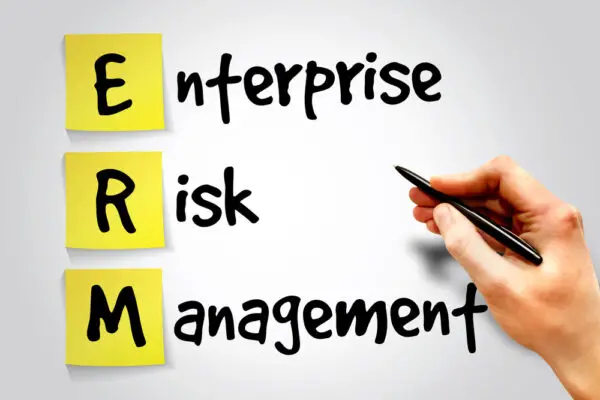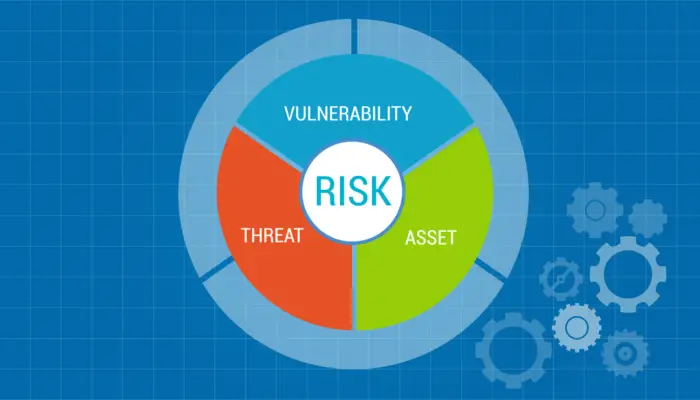In today’s rapidly changing business landscape, organizations must constantly navigate a sea of uncertainties and potential threats. Effective risk management plays a vital role in ensuring that organizations can adapt and thrive amidst these challenges.
A crucial component of the risk management life cycle is the evaluation of risks. In this blog post, we will explore the key objectives and significance of evaluating risks, delving into how this process helps organizations prioritize threats, allocate resources effectively, and build robust strategies to both mitigate risks and potential impacts on their operations and goals.
Risk management is a critical aspect of any organization’s operations, as it helps identify, assess, and manage potential threats that can impact the successful completion of projects, business goals, and overall stability. Depending on the risk management framework of an organization the risk management team will identify risk monitor and analyze risks.
At the heart of the risk management life cycle is the evaluation of risks. And the steps of the risk management process identify various risks in a risk register including project risks.

Risk Assessment
Risk assessment is a systematic process used to identify, evaluate, and prioritize potential risks that an organization may face. Risk assessments is a crucial component of risk management, helping organizations make informed decisions about resource allocation, risk response strategies, and overall business planning. The risk assessment process typically involves the following steps:
Risk Identification:
The first stage of risk assessment involves identifying potential risks or threats that could impact the organization’s objectives, operations, or stakeholders. This can include internal risks (e.g., personnel, processes, technology) and external risks (e.g., economic factors, competition, regulations).
Various methods can be used to identify possible risks beforehand, such as brainstorming, expert opinions, historical data analysis, and scenario planning.
Risk Analysis:
Once potential risks are identified, they must be analyzed to determine their likelihood of occurrence and potential impact on the organization. This analysis can be qualitative or quantitative.
Qualitative analysis involves categorizing risks based on their severity and probability, while quantitative analysis uses numerical values and statistical techniques to determine the exact impact and likelihood of each risk.
Factors to consider during risk analysis include the risk breakdown structure, organization’s vulnerability to the risk, the potential consequences, and the existing controls in place.
Risk Evaluation:
After analyzing the risks, the next step is to evaluate their significance by comparing them against the organization’s risk tolerance and risk appetite.
Risk tolerance refers to the level of risk an organization is willing to accept, while risk appetite refers to the amount of risk an organization is willing to take on in pursuit of its objectives.
The Main Goal: Understanding and Prioritizing Risks
The main goal of evaluating risk is to gain a thorough understanding of the potential threats and determine their severity, likelihood of occurrence, and potential impact on the organization’s objectives. This understanding allows organizations to prioritize risks, allocate resources efficiently, and establish an effective risk response strategy.
This is necessary so that the risk management process dovetails with other systems such as organizing, planning, budgeting, and cost control. There are four generally accepted ways to respond to risks—avoidance, mitigation, acceptance, and transfer.
Risk avoidance is the process of avoiding or eliminating specific risks. Evaluating risk involves several steps, which we will explore in detail below.
Risk Identification
The first step in evaluating risks is identifying risks the potential threats that an organization may face. This may include both internal and external risks, such as economic conditions, competition, technological advancements, regulations, and human factors.
The organization should use various tools and techniques, such as brainstorming sessions, expert opinions, and historical data analysis, to ensure that no potential risk is overlooked.
Risk Analysis
Once the risks are identified, they need to be analyzed to determine their likelihood of occurrence and potential impact. Risk analysis can be performed qualitatively or quantitatively, depending on the organization’s needs and the availability of data.
Qualitative analysis involves categorizing risks based on their severity and probability, while quantitative analysis uses numerical values and statistical techniques to determine the exact impact and likelihood of each risk.

Risk Evaluation
The third step in evaluating risks is determining their significance by comparing the analyzed risks against the organization’s risk tolerance and risk appetite.
This process helps organizations prioritize risks based on their potential impact on the organization’s objectives and decide whether a risk is acceptable or requires further action.
Risk Treatment
The next step is developing risk treatment plans to address prioritized risks. This can involve implementing risk mitigation strategies, transferring the risk to a third party (e.g., through insurance), avoiding the risk entirely, or accepting the risk if it falls within the organization’s risk tolerance.
The chosen treatment plan should be cost-effective and aligned with the organization’s overall objectives.
Monitoring and Reviewing
Lastly, organizations need to continuously monitor and review their risk management strategies to ensure their effectiveness and adapt them as needed.
This includes keeping track of the identified risks in a risk management plan, re-evaluating them periodically, and updating the risk treatment and risk management plans accordingly.
Key Objectives and Significance of Evaluating Risks
The key objectives and significance of evaluating risks lie in their ability to provide organizations with a solid foundation for informed decision-making and resource allocation. Through evaluating risks, organizations and risk managers can achieve the following critical objectives:
Understanding Risks: Gaining a comprehensive understanding of potential threats, their likelihood of occurrence, and risk analyze their potential impact on the organization’s objectives and operations.
Prioritizing Risks: Determining the relative importance of each identified risk by considering their potential impact and probability, which allows organizations to focus on the most significant threats.
Resource Allocation: Allocating resources effectively by identifying and prioritizing risks, ensures that the organization can address the most critical threats without overstretching its resources.
Risk Response Strategy: Develop tailored risk response strategies not all risks, such as risk avoidance, mitigation, transfer, or acceptance, based on the evaluation and prioritization of risks.
Enhanced Resilience: Strengthening the organization project team’s resilience and adaptability in the face of uncertainties, ultimately helping to safeguard its long-term success and stability.
The significance of evaluating risks lies in its ability to help organizations anticipate and manage potential challenges proactively.
Managing Risks
Managing risks refers to the systematic process of identifying, analyzing, evaluating, treating, and monitoring potential threats that can impact an organization’s objectives, operations, and stakeholders.
Effective risk management allows organizations to make informed decisions, allocate resources efficiently, and develop appropriate strategies to minimize negative effects and capitalize on opportunities
Organizations can use a variety of techniques to manage risk effectively. These include developing policies and procedures for risk assessment project management and response; implementing training programs for employees on how to identify and respond to risks; creating systems for monitoring potential threats; establishing contingency plans in case of emergency; and conducting regular reviews of risk management processes.

What’s the main goal when evaluating a risk?
The main goal when evaluating risk is to understand its potential impact on the organization’s objectives, as well as its likelihood of occurrence and severity. This understanding allows organizations to prioritize risks, allocate resources efficiently, and develop appropriate risk response strategies to minimize the negative effects on their goals and operations.
Conclusion
Evaluating risks is a crucial aspect of the risk management life cycle, as it helps organizations understand and prioritize potential threats. The main goal of evaluating risks is to determine their severity, likelihood of occurrence, and potential impact on the organization’s objectives. By doing so, organizations can develop effective risk response strategies, allocate resources efficiently, and enhance their overall stability and resilience.

Chris Ekai is a Risk Management expert with over 10 years of experience in the field. He has a Master’s(MSc) degree in Risk Management from University of Portsmouth and is a CPA and Finance professional. He currently works as a Content Manager at Risk Publishing, writing about Enterprise Risk Management, Business Continuity Management and Project Management.

